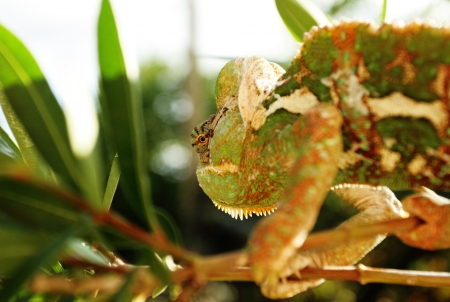Understanding the Needs of Exotic Amphibians
The UK has seen a growing interest in keeping exotic amphibians as pets, with species like axolotls, fire-bellied newts, and red-eyed tree frogs becoming increasingly popular. However, caring for these fascinating creatures is far more complex than one might initially think. Each species comes with its own unique set of requirements, and understanding these needs is essential for their health and wellbeing—especially given the distinctive British climate.
Common Exotic Amphibians Kept in the UK
| Species | Origin | Typical Requirements |
|---|---|---|
| Axolotl | Mexico | Cool water, low light, aquatic setup |
| Fire-Bellied Newt | East Asia | Semi-aquatic habitat, moderate temperatures |
| Red-Eyed Tree Frog | Central America | Tropical terrarium, high humidity, warmth |
| Dart Frog | South America | Tropical rainforest conditions, misting system |
| White’s Tree Frog | Australia/Indonesia | Warmth, humidity, arboreal enclosure |
The Importance of Species-Specific Care in the UK Climate
Britain’s often cool and damp environment can pose challenges when replicating the ideal conditions needed by many exotic amphibians. Heating and humidity controls become vital during colder months, while summer heatwaves may require cooling measures for sensitive species like axolotls. It is crucial to research each pet’s natural habitat and adjust care routines accordingly. Being mindful of the UK’s seasonal changes ensures your amphibian not only survives but thrives under your guardianship.
2. Setting Up the Perfect Habitat
Creating a suitable home for your exotic amphibian is essential, especially under the variable UK climate. A well-designed terrarium replicates your pet’s natural environment, ensuring both their health and happiness. Start by selecting an appropriately sized glass or plastic terrarium with a secure lid to prevent escapes. Ventilation is crucial, but avoid draughts that may chill your amphibian.
Terrarium Requirements
| Feature | Recommendation |
|---|---|
| Size | Minimum 45x45x60cm for most species; bigger is always better |
| Material | Glass or sturdy plastic for insulation and visibility |
| Lid | Secure, escape-proof, with mesh sections for airflow |
| Location in Home | Away from direct sunlight, radiators, and draughty windows |
Choosing the Right Substrate
The base of your terrarium should mimic your amphibian’s natural habitat. For moisture-loving frogs, coconut fibre or sphagnum moss keeps humidity high. Terrestrial salamanders thrive on a mix of soil and leaf litter. Always avoid cedar or pine shavings as these can be toxic.
Common Substrate Options
| Substrate Type | Best For |
|---|---|
| Coconut Fibre (Coir) | Tropical frogs, newts, salamanders |
| Sphagnum Moss | Damp-loving species needing high humidity |
| Organic Topsoil (No fertilisers) | Burrowing amphibians like axolotls or fire salamanders |
| Gravel (with caution) | Aquatic species – ensure it cannot be swallowed! |
Managing Temperature, Humidity, and Lighting in the UK
The British weather means indoor conditions often need careful adjustment:
- Temperature: Most exotic amphibians thrive at 18–25°C. Use a thermostat-controlled heat mat or ceramic heater if room temperature drops below this range.
- Humidity: Maintain humidity between 60–80% for tropical species. Regular misting and water bowls help; monitor levels with a hygrometer.
- Lighting: Amphibians generally need a day/night cycle. LED lights on a timer replicate daylight hours; some species benefit from low-level UVB lighting for healthy skin and bone development.
- Seasonal Tips: In colder months, insulate tanks with polystyrene sheets on sides and back. Avoid placing near radiators as sudden temperature changes can stress your pet.
Caring Beyond the Basics: A Labour of Love
Your dedication to crafting a comfortable, stable home will reward you with the privilege of observing fascinating behaviours—tiny feet digging into cool moss, gentle croaks at dusk—and knowing you’re making a difference to an extraordinary creature’s life right here in the UK.

3. Feeding and Nutrition Essentials
Nourishing your exotic amphibian with the right diet is crucial for its health and longevity. In the UK, sourcing suitable live food and supplements can seem daunting at first, but a little local knowledge goes a long way. Amphibians such as frogs, newts, and salamanders require varied diets rich in protein and essential vitamins. Below is a handy guide to commonly recommended foods and where to find them:
| Food Type | Description | UK Supplier Suggestions |
|---|---|---|
| Live Crickets | Staple insect for most amphibians; high in protein. | Specialist reptile shops, online (e.g., Northampton Reptile Centre) |
| Mealworms & Waxworms | Good for variety; feed sparingly due to fat content. | Local pet shops, mail order (e.g., The Spider Shop) |
| Daphnia & Bloodworms | Ideal for aquatic species; provide essential nutrients. | Aquatic centres, aquarium suppliers |
| Earthworms | Nutrient-rich and highly palatable for larger species. | Garden centres (chemical-free), bait shops |
Supplementing Diets for Optimal Health
While live foods form the basis of most amphibian diets, supplementation is often necessary—especially in the UK’s sun-deprived climate. Dusting food items with calcium powder or a multivitamin supplement two to three times weekly helps prevent common deficiencies like metabolic bone disease. For amphibians housed indoors, consider using a UVB lamp or supplement containing vitamin D3, as natural sunlight exposure is limited for most pets.
Recognising Reliable Local Suppliers
The welfare of your amphibian depends not only on what you feed but also where you source it. Always choose reputable UK-based suppliers who prioritise ethical breeding and high standards of hygiene. Many independent pet shops across the UK now specialise in exotic pets and will happily offer advice tailored to your specific species. Joining local herpetology groups or online forums can also connect you with trusted sources and community support.
A Note on Sustainability and Welfare
Your choices as an owner impact both your pet and the wider environment. Opt for locally-sourced foods when possible to reduce your carbon footprint and support British businesses. If you forage earthworms from your garden, ensure the area is free from pesticides or harmful chemicals. By being mindful in your sourcing and supplementation, you help create a caring environment that allows your exotic amphibian to flourish within the unique context of UK life.
4. Health Monitoring and Local Veterinary Support
For new amphibian keepers in the UK, maintaining your pet’s wellbeing goes beyond daily care—it’s about vigilance and swift action. Exotic amphibians can be sensitive to changes in their environment, making it essential to recognise early signs of stress or illness. Proactive health monitoring not only improves quality of life for your amphibian companion but also prevents minor issues from becoming major concerns.
Recognising Signs of Stress or Illness
It can be challenging to tell when an amphibian is unwell, as many species instinctively hide symptoms. However, careful observation will help you spot subtle changes. Here’s a handy table summarising common signs of stress or illness:
| Sign | Description | Possible Causes |
|---|---|---|
| Lethargy | Lack of movement or response | Temperature issues, infection, dehydration |
| Poor Appetite | Refusing food or eating less than usual | Stress, improper diet, illness |
| Skin Changes | Discolouration, sores, excessive shedding | Bacterial/fungal infection, poor humidity, substrate irritation |
| Abnormal Swimming/Movement | Erratic movements or floating awkwardly | Nutritional imbalance, injury, water quality issues |
| Weight Loss | Visible thinning or weight reduction over time | Parasitic infection, malnutrition, chronic stress |
| Noisy Breathing or Gasping at Surface | Loud breaths or frequent trips to the water surface for air (aquatic species) | Poor water quality, respiratory infection |
Finding Exotic Pet Vets and Amphibian-Friendly Clinics in the UK
If you notice any warning signs, don’t delay—seek professional advice promptly. Not all veterinary practices have experience with exotic amphibians, so it’s important to locate a suitable clinic before an emergency arises. Consider these tips:
- Specialist Directories: Use organisations like the British Veterinary Zoological Society (BVZS) to find registered exotic animal vets near you.
- Local Recommendations: Reach out to local herpetological societies or online UK-based amphibian forums for trusted vet suggestions.
- Ask Before You Need: Contact clinics ahead of time to confirm they treat exotic amphibians and inquire about emergency protocols.
- Travel Prepared: If you live rurally or far from specialist care, have a safe travel container ready and know the quickest route to your chosen clinic.
The Value of Community Support
You’re never alone on this journey. The UK boasts a caring community of amphibian enthusiasts who are keen to share advice and support. By staying informed and building local connections, you ensure that your exotic companion receives the compassionate care they deserve—no matter what challenges arise.
5. Legal and Ethical Responsibilities
As an exotic amphibian owner in the UK, understanding your legal and ethical responsibilities is fundamental to ensuring both the well-being of your pet and compliance with national regulations. The UKs commitment to animal welfare is reflected in several key pieces of legislation and ethical frameworks that new owners must be aware of.
UK Legislation Governing Exotic Amphibians
Legislation |
Key Points |
|---|---|
Animal Welfare Act 2006 |
Mandates a duty of care for all animals, including amphibians, requiring owners to provide suitable living environments, proper diet, and protection from pain and suffering. |
Dangerous Wild Animals Act 1976 |
Certain species of exotic amphibians may require a special licence; always check if your pet falls under this category before purchase. |
CITES (Convention on International Trade in Endangered Species) |
Regulates the import, export, and sale of certain protected species; ensure all purchases are accompanied by appropriate documentation. |
Welfare Considerations for Amphibians
The unique needs of amphibians mean their welfare extends beyond just physical health. Owners are expected to create environments that closely mimic natural habitats, provide appropriate humidity and temperature controls, and offer enrichment opportunities. Regular veterinary checks are advisable to monitor for stress or disease, which can often go unnoticed.
The Importance of Ethical Sourcing
Ethical sourcing is not only a moral obligation but also helps protect wild populations from exploitation. When acquiring an exotic amphibian:
- Always choose reputable breeders or rescue organisations over wild-caught specimens.
- Request evidence of captive breeding and proper documentation.
- Avoid supporting illegal trade, which endangers both individual animals and entire species.
Caring for an exotic amphibian in the UK is about more than providing food and shelter—it involves respecting both legal frameworks and the intrinsic value of these fascinating creatures. By doing so, you contribute to a more compassionate society and help safeguard vulnerable species for generations to come.
6. Community, Advocacy, and Support
Becoming a responsible exotic amphibian owner in the UK extends beyond your home. By engaging with local communities and advocacy groups, you not only enrich your own experience but also contribute to the wider well-being of amphibians. Finding others who share your passion can provide support, advice, and friendship—especially valuable for those new to amphibian care.
Finding Local Amphibian Owner Groups
Across the UK, there are vibrant communities dedicated to amphibian care and conservation. Joining these groups allows you to connect with experienced keepers, exchange husbandry tips, and even participate in meetups or events.
| Organisation | Focus Area | How to Join |
|---|---|---|
| The British Herpetological Society (BHS) | All reptiles & amphibians | Membership via website; regular meetings & journal |
| Froglife | Amphibian conservation & education | Volunteer opportunities; join online community forums |
| Local Facebook Groups | Species-specific care & rehoming | Search for your region + “amphibian owners” |
Participating in Conservation Initiatives
The UKs unique habitats face ongoing threats, making conservation efforts crucial. Many organisations offer citizen science projects, habitat restoration days, and fundraising events. Your participation not only benefits wild populations but also deepens your understanding of native and exotic species’ needs.
- Pondwatch: Report sightings and help monitor amphibian health.
- Habitat Days: Volunteer to restore ponds and wetlands in your area.
- Awareness Campaigns: Share information about responsible ownership and biosecurity practices in your local community.
Connecting with Supportive Communities
No one should feel alone on their amphibian-keeping journey. The UK offers a range of online forums, helplines, and social media groups where you can seek advice or simply share the joys (and challenges) of caring for exotic species. These networks promote responsible ownership and provide emotional reassurance when facing new situations.
Useful UK-Based Resources:
- BHS Forum: Technical advice from seasoned herpetologists
- The Amphibian Foundation UK: Webinars and care guides tailored for British conditions
- Pets at Home Community: Practical tips for new keepers from across the country
Together for Amphibians’ Wellbeing
Your commitment as an owner shapes not only the lives of your pets but also contributes to a compassionate network working towards healthier habitats and happier animals throughout the UK. By joining hands with others, you become part of a movement that values empathy, responsibility, and hope for all amphibians—both exotic and native.


